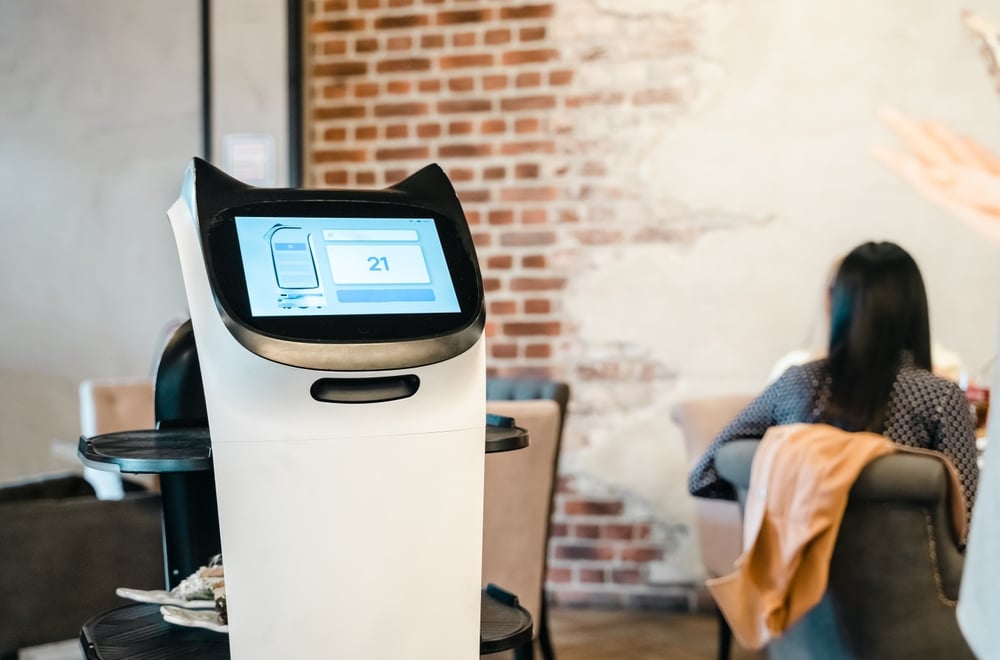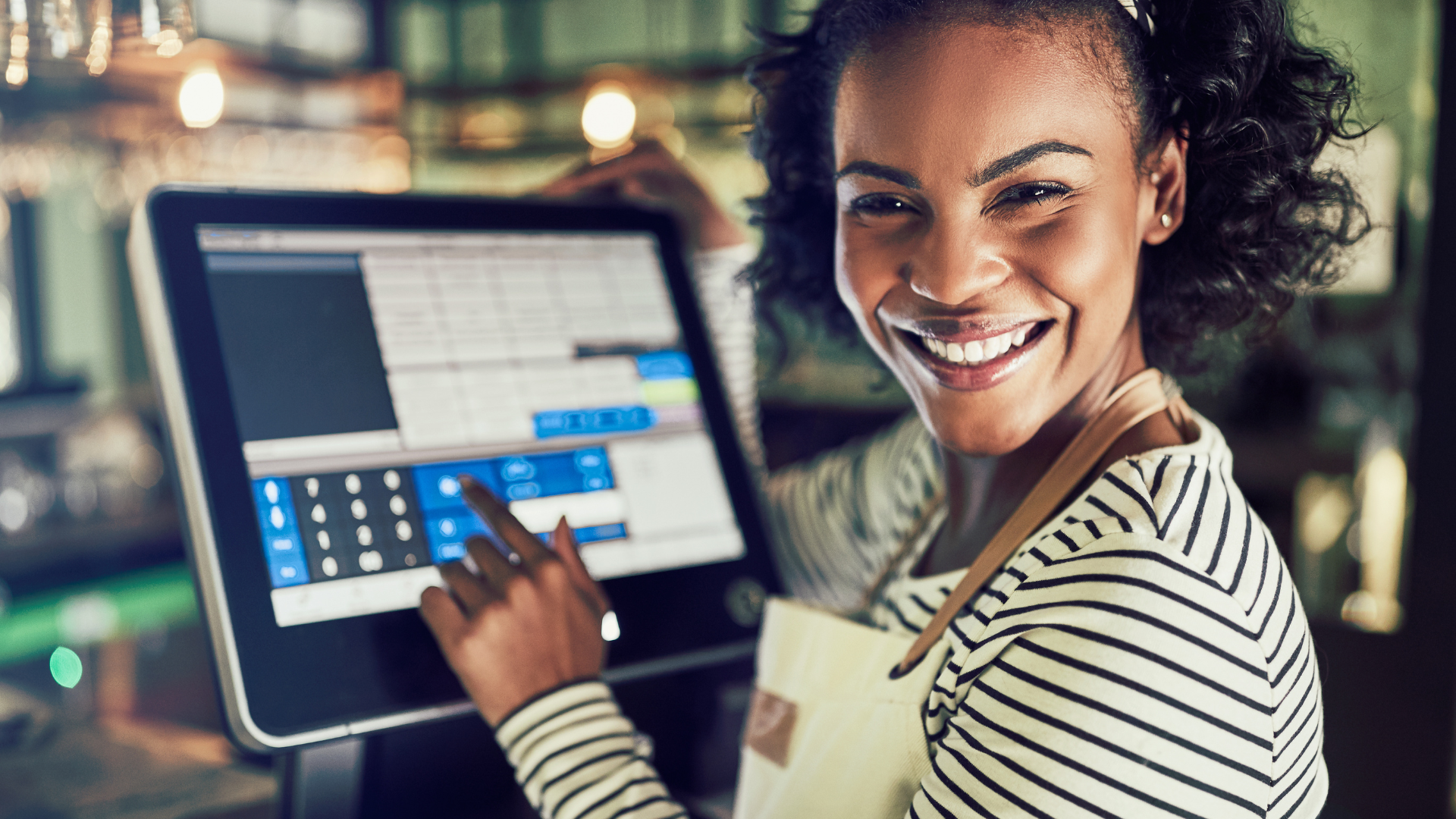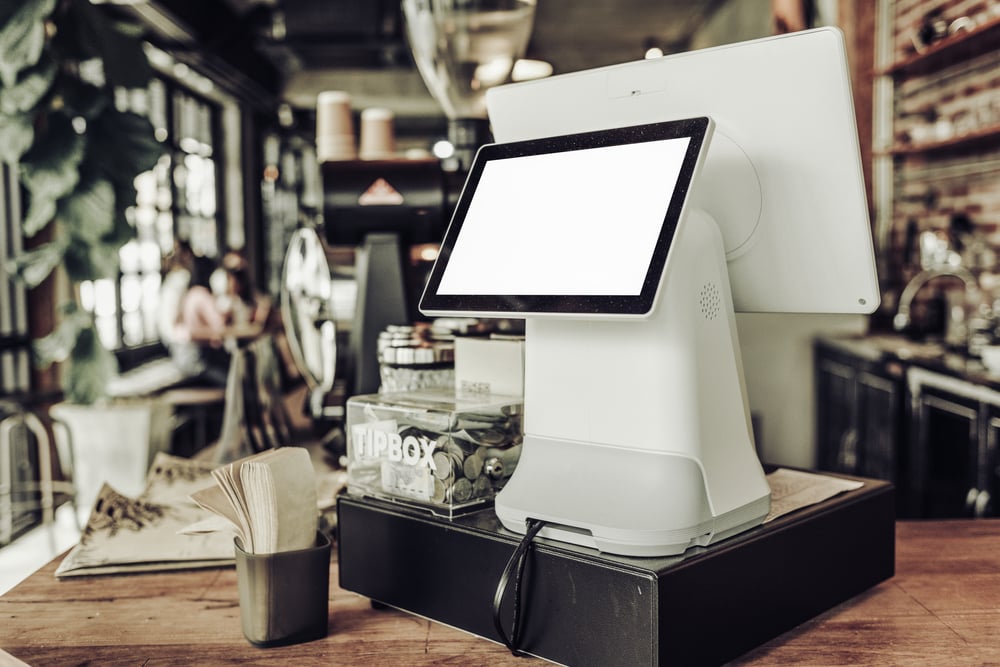Artificial intelligence has become a crucial part of the restaurant industry in recent years. By properly implementing AI, you can optimise dining experiences and remove costly, time-consuming chores, freeing up time to focus on more important tasks.
However, to get the most out of using AI for restaurants, you need to know the most suitable systems and how to use them. In our complete guide, we’ll share nine of the best ways to use it in your restaurant.
What is artificial intelligence (AI)?
AI for restaurants involves restaurant operators using specific systems and software to gather customer data, increase food quality, offer personalised service and more.
With machine learning, AI doesn’t need to constantly be updated with new information. It learns as it goes, allowing it to more effectively serve your business.
It can precisely perform tasks that are crucial to the health and safety of your restaurant consistently and efficiently. Key ways AI can be used in restaurants include:
- Personalised experiences: AI-powered customer relationship management (CRM) tools can use your customers' data to improve service and marketing. This can include when they most commonly have dined with you or their special dates and preferred orders. These tools can then create a personalised experience by suggesting menu items or reaching out on birthdays or other dates.
- Marketing: AI tools can be a valuable asset when it comes to marketing. Generative AI can be used to create text, imagery and videos to promote your venue. This can make marketing your venue far more cost efficient.
- Dynamic pricing: An AI system is capable of adjusting menu prices in real time based on things like menu demand, the cost of ingredients and competitor pricing. This gives your business the chance to use a highly dynamic pricing strategy. With AI, you can ensure a profit on each of your menu items with greater accuracy and change plans rapidly, letting you stay ahead of your competitors.
Benefits of using AI for restaurants
Using AI in your restaurant can offer serious benefits to your hospitality venue. Here are some of the ways your restaurant can improve by using AI:
1. Greater efficiency
Artificial intelligence enables you to automate time-consuming chores with enhanced precision, increasing your general efficiency and freeing up time for your staff. With more time at your disposal, you and your team can focus on more important tasks, like offering a better customer experience or focusing on digital marketing campaigns to attract more customers.
Systems to help you increase your efficiency include using machine learning in data analysis, sharing AI-made checklists or automating follow-up messages with customers. Check out our complete guide to automation in restaurants to learn more about AI that can help your business.
2. Reduced costs
You can reduce your daily costs by incorporating AI into their daily operations and assigning repetitive, precision-dependent tasks to AI. This can include activities like writing and sending follow-up emails to customers after they’ve dined, inventory management jobs and food safety monitoring.
By using AI in these areas, you have an opportunity to downsize your staff, reduce your hiring costs and ensure your team is being more efficiently managed with each member being given a more exact role.
This cuts down your labour costs and ensures a more efficient working environment. This same principle can apply to an array of facets of your restaurant, giving you more areas to optimise your operations and improve your profit margins.
3. Competitive advantage
Restaurants need as many advantages over their competitors as possible. By not embracing new innovations that your competitors are using, you risk falling behind and losing vital customers.
To stand out against your competitors, you need to meet customer demand and offer a high standard of dining that your immediate competitors can’t match. AI can help give you that edge by offering more personalised services or crafting marketed campaigns that directly target your main demographics.
By utilising AI in ways your competition doesn’t, you can ensure you stay ahead of them, while simultaneously creating more efficient operations that offer a better customer experience.
9 ways to use AI in restaurants
Now, you understand how AI systems can boost your restaurant's operations. It's time to get specific about the various forms they can take in your venue. Here are nine of the top ways to put AI in place in your restaurant.
1. Improve customer relationship management
AI for restaurants presents a unique chance to convert your customer and reservation data into solutions and opportunities. For instance, you can personalise your marketing and services based on your customer’s information. Through improved customer relationship management comes a better relationship with your diners and more repeat bookings.
nollie is a customer relationship management (CRM) AI tool that gives your business the tools you need to get results fast. POS and restaurant data will seamlessly sync with the system, enabling it to segment your customers based on their favourite menu items, how much they spend and how frequently they visit.
From there, the AI can generate intricate campaigns, services and messages personally targeted to your guests’ wants and needs. This allows you to craft outstanding customer relations without needing to commit dozens of hours.
Best of all, nollie integrates with ResDiary, allowing you to make the most of your booking data. This enables you to deliver personalised marketing to your customers with ease.
2. Get help with your marketing
Using AI technologies can be an effective shortcut for creating marketing campaigns and effective promotional materials. This applies to everything from email marketing campaigns to social media posts.
Marketing is a tricky field to understand. By using AI to help with marketing, business owners don’t need to dedicate the time or resources they would otherwise need to craft quality content.
When you integrate nollie with ResDiary, your business can move beyond standard marketing templates. You can automate your campaign with data-driven personalisation that emphasises the best aspects of your business. This allows you to achieve real results, increasing bookings and customer loyalty.
nollie connects your crucial restaurant data into one place, including customer profiles, POS sales and even manually uploaded databases. From there, it can suggest marketing campaigns and designs suitable for your brand by analysing key customer behaviour and industry trends. It’s a crucial tool for all your marketing needs.
3. Bolster your online presence
Through social media campaigns and website design, AI can boost your online presence and improve your restaurant’s reputation. Without a strong online presence, potential customers may not find your business and could choose your competitors over you.
In fact, according to ResDiary's Beyond the Booking Industry trend report, 36% of diners in Australia and New Zealand use social media to find restaurants.
With generative AI tools, a restaurant owner can consistently produce high-quality, engaging content for social media platforms to encourage more engagement with their brand and gain more online visibility.
This means that staff and management need less time to brainstorm and create content for your platforms. It also means you may not have to hire professionals to manage your social media content.
Even with engaging social media posts, if your website is poorly designed or runs too slowly, potential customers may not check out your services and go to your competitors. AI can be used to assist in creating an appealing restaurant website or create templates that help owners design appealing, high-converting sites.
With ResDiary’s Meta integrations, you can convert your social media following into more bookings by enabling your customers to reserve a table straight from your Facebook or Instagram pages.
4. Brainstorm more effectively
Many hospitality workers enjoy the chance to get creative when working on their restaurants, but other owners and managers may struggle to find the creative inspiration they need to meet their restaurant's aesthetic and brand. Some may find creating menu descriptions and designs tiresome. If you don’t have the right skills there’s no guarantee of acceptable quality even after significant effort.
With AI-powered chatbots like ChatGPT, staff can help you create recipes, dish names, mission statements and more. AI can even inspire the name of your restaurant if you’re finding you need a creative push.
AI can also be used to create images for your brand. However, you must consider that using AI images may cause legal issues. Check out our guide to using ChatGPT in restaurants for more prompts you can use in your venue.
5. Optimise restaurant management
In addition to taking repetitive tasks off of your staff’s daily schedule, AI has versatile capabilities suitable for time-consuming tasks that need to be precisely managed, such as:
- Rosters: Generative AI like ChatGPT can be used to instantly generate rosters for your workplace. Simply give the prompt variables like staff numbers, availability and shifts and the model will create a functional roster instantly.
- Event scheduling: AI chatbots can be handy when it comes to finding optimal times to host events. They can create event programmes in a second. With systems like nollie or ResDiary’s built-in email marketing features and texting integrations like Silverstreet, you can send out promotions for your event to your customers automatically.
- Business plans: AI can help produce professional documents like business plans. Simply provide the system with detailed prompts for each section of your business plan and edit as necessary.
6. Robot waiters and chefs
To add a futuristic aesthetic to your restaurant, entertain your customers and cut down on labour costs all at once, consider hiring a robot chef and robot waiters. With robot staff, your business has a unique gimmick that creates a fun experience for your customers and can free up staff for other tasks.
Robot chefs are most commonly used in the fast food industry, with many lines being focused on fry cooking, such as the Miso Robotics ‘Flippy’ line, designed to accurately flip patties for high-quality burgers that a human might not produce as consistently.
Robot chefs are also capable of cooking more complicated recipes, even ones that require stir frying and seasoning.
However, for many restaurant owners, a robot chef may be too expensive to be practical for their venue. Before purchasing, consider if a robot chef is suitable for your business and your budget.
Robot waiters are machines that deliver dishes directly to customers' tables using sensors, cameras and pre-programmed routes. Some models can greet or interact with customers through a touchscreen or voice recognition, allowing them to list specials or make recommendations.
Robot waiters can help address staff shortages, and are a fun, attention-grabbing novelty to many restaurants that use them. However, the waiter may be expensive to purchase and maintain, and most robot waiters cannot handle stairs, outdoor areas or steep inclines.
7. Maximise your data analysis
AI systems are capable of analysing huge quantities of data in seconds. This allows them to identify patterns and draw insights a human eye might never discover. AI can also help to ensure the accuracy of your data by taking care of things like removing duplicate datasets.
By using AI to gain more accurate data, you can optimise your finances and maximise your restaurant’s return on investment for inventory, labour costs and marketing.
For example, using AI to create a financial analysis document can help streamline your business’s analytics and craft a restaurant forecast that is completely accurate on the exact details of your finances. This results in higher quality financial documentation for your business.
With analysis using the AI’s pin-point accurate data, you gain actionable insight on what could be improved across your brand. This can include seasons where your business requires an extra marketing push, or if there are menu items that are causing a net loss due to the cost of ingredients.
Using integrations like PowerEPOS, you have more real time data to use in a financial analysis, ensuring that no part of your business is overlooked. This data enables you to get maximum value out of AI systems.
8. Training and development
AI tools can be used to create effective training and development programs. With AI, these programs for restaurant employees can achieve the following outcomes:
- Personalised learning: Artificial intelligence can recognise the learning behaviours of users. This allows it to adapt teachings for better results.
- Target knowledge gaps: AI can prevent employees from learning information they already know. If the system identifies that the user is already aware of an area of the course, they can skip certain sections.
- Content creation: Different types of learners need different forms of content. AI systems can create audio-visual and interactive content with relative ease. This helps to cater for a wide range of employees.
9. Increase convenience with digital kiosks
Digital kiosks are free-standing screens which customers can order from, meaning they do not need to talk to a human employee. These are a popular addition to many restaurants, especially in the fast-food industry as they reduce wait times and streamline the ordering process. With artificial intelligence, digital kiosks can become even more effective.
AI-driven digital kiosks can analyse your customer’s preferences, past orders and buying habits to suggest menu items catered to their tastes. It can also upsell less popular items to ensure you are wasting less inventory and have better profit margins on all your menu offerings.
AI for digital kiosks also enables immediate dynamic menu pricing. The AI can adjust your offerings in real time, based on remaining inventory, time of day and even the weather, ensuring the best items are promoted first.
Leverage AI in your venue with ResDiary and nollie’s integration
Take your business to the next level with ResDiary’s nollie integration. nollie is an easy to use system that connects all your guest data into one place, including booking data, POS systems and even anything you have manually uploaded. Say goodbye to jumping between tabs just to find a customer's name or order history.
With your customers' information, nollie can launch smarter campaigns in a short amount of time and will recommend what to send and when to send it. nollie uses templates and content tailored to your venue and your diners, taking out the guesswork out of marketing.
Streamline your marketing efforts in your restaurant by booking a demo with nollie today.



